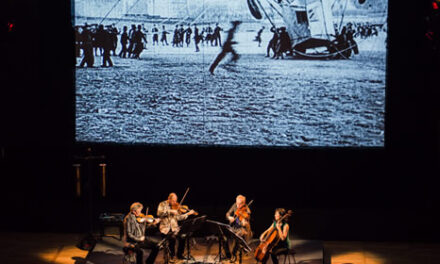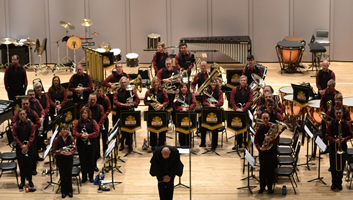After an incredible amount of faffing around with a handheld microphone in a room that needed no sound system, Danish organist Ulrik Spang-Hanssen was able to give, unplugged, a brief introduction. He told of his first meeting with Tomasz Lewtak, who appeared at his door with a request for organ lessons. Spang-Hanssen arranged to give lessons in exchange for Lewtak’s painting his house!
Now Spang-Hanssen, visiting the US to perform in New York, was persuaded by Lewtak to come play his new instrument in Greenville. The stoplist: is here: http://lewtak.com/index.php?idk=2&idp=2.
Spang-Hanssen opened with two chorale preludes (both from the Eighteen Great) of J. S. Bach: “Komm heiliger Geist” (S.651) and “Allein Gott in der Höh sei Her’” (S.662). “Komm heiliger Geist,” played on the full principal chorus, was at a perfect tempo, brisk, but not breathtaking. I did not feel that the pedal registration chosen was nearly as clear as it might have been on this instrument. Spang-Hanssen is a daring performer of interesting variants in the received understanding of Bach-playing; I think his judgment is wise. There were two different places where a really extreme hesitation felt at first like a whopper of a lost place, only to be revealed as completely intentional when it occurred again. The pedal was again too big in the “Allein Gott” (I suspect it sounds just fine at the keyboard). Although I prefer a more contemplative pace, Spang-Hanssen’s delightful variations and embellishments in the repeats were exactly as suggested in C. P. E. Bach’s Essay on the True Art of Playing Keyboard Instruments.
Bach’s almost-contemporary Louis-Nicolas Clérambeault was represented by his Suite du 1er Ton. Spang-Hanssen’s playing standard seems to be a strong legato, which brings his deft use of dramatic pauses into great prominence. Such was the case in the Clérambeault, with its walking-bass Grand Plein Jeu; the very serious Fugue (very properly on the reeds); the Duo, which exploited and contrasted the reeds and the tierce; the Trio (sadly lacking in drama); the great, grand glorious Basse et Dessus de Trompette; the Récits (Great flutes to begin, then Swell reeds and tierce alternated, made possible by the combination action); and the final Dialogue, right on the edge of too loud.
Cesar Franck’s deathbed Choral in E major sounded totally French on the delicious big tubby principals to begin with. There were multiple registration changes and very skilful Swell pedaling.
Franck leads inevitably to Widor, or better yet, to Théodore Dubois, whose Toccata was the absolute highlight of this performance, suggesting that Spang-Hanssen was just waking up. The A section, on the most sparklingly-imaginable registration on the Great, was totally clear and totally fast. The exaggerated two-note harrumphs in the pedal were perfect. The B-section includes what sound like allusions to the slightly earlier Widor Toccata, then returns to the A-section, which will undoubtedly be played this well by Spang-Hanssen at roller derbies in Heaven. This, like every piece played, was noticeable for an ungraceful “last-measure spread” as the performer stretched to reach the same toe piston, probably the general cancel, at the right of the pedalboard.
After intermission, Spang-Hanssen made a point that the rest of the program was not “proper organ music” but was two transcriptions. The first was Bach’s well-known transcription of Vivaldi’s Concerto in A minor for two violins and orchestra (S.593). This bravura transcription was given a bravura performance. The first movement was very clear, with a well-defined pedal line and fun extra ornaments, approximating violins ornamenting their written lines. In the middle Adagio, the two solo violins could be heard slugging it out in parallel lines on the second manual reed with tremulant, each vying with the other for the better ornamentation. In the final Allegro the tempo did not seem brisk, rather “just right,” until the descending pedal line cascaded under Spang-Hanssen’s nimble feet.
The second transcription was Liszt’s capture of Otto Nicolai’s “Kirchliche Festouverture” on “A Mighty Fortress is Our God.” This very big piece, as big as an orchestral score and Liszt’s thick chords can make it, is mostly just more variations. (I confess to being sensitized to variations after the March recital on this organ.) The tone was largely somber, a strong change from the bright sounds appropriate to North German baroque music, contrasted by delicate interludes on the Swell division.
This program was a choice opportunity to hear a fine organist of international stature as well as continue our learning process with this fine new organ of international stature as well. A well-deserved standing ovation was squelched when the pastor took the stage with the hand-held microphone to deliver a few anticlimactic off-the-cuff remarks. Even that could not dull the brilliance of a fine performance.












